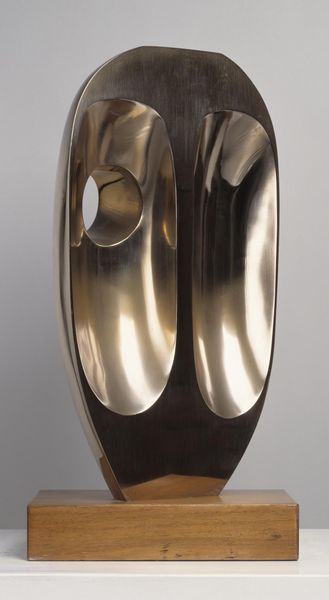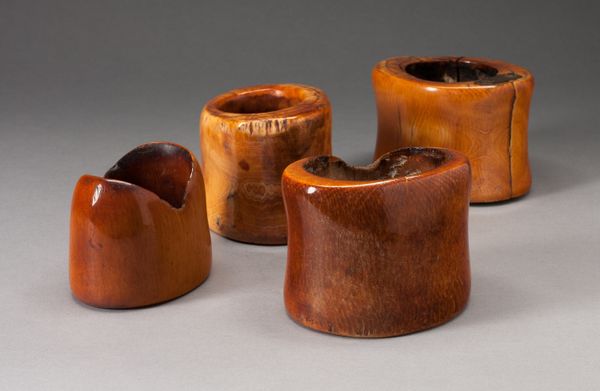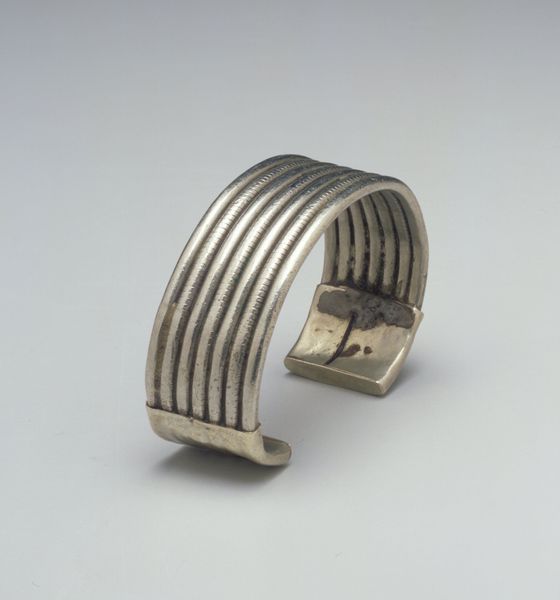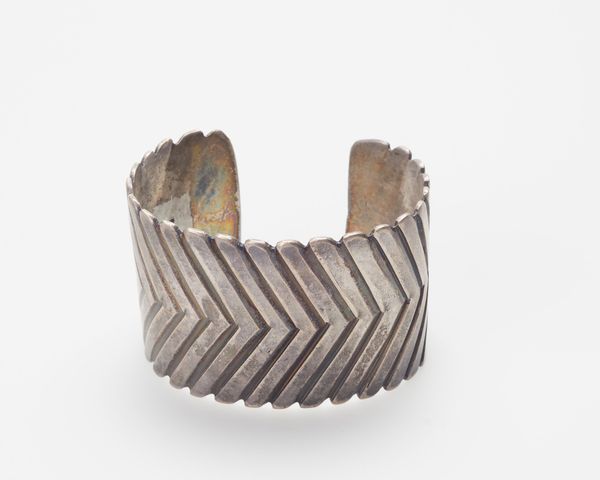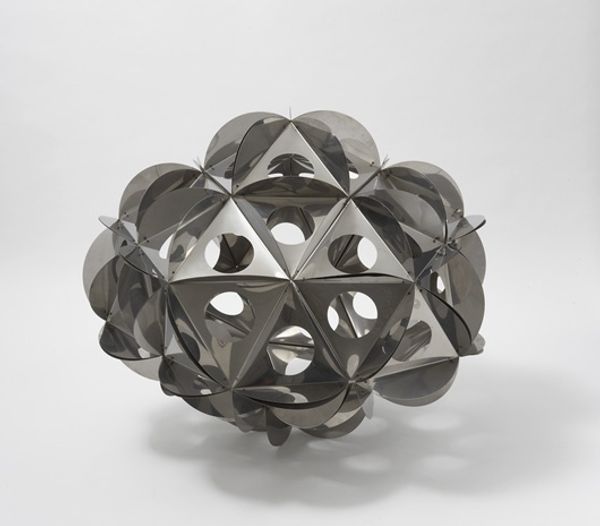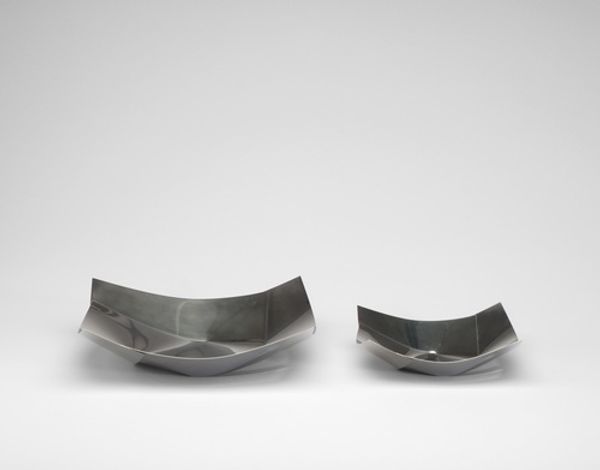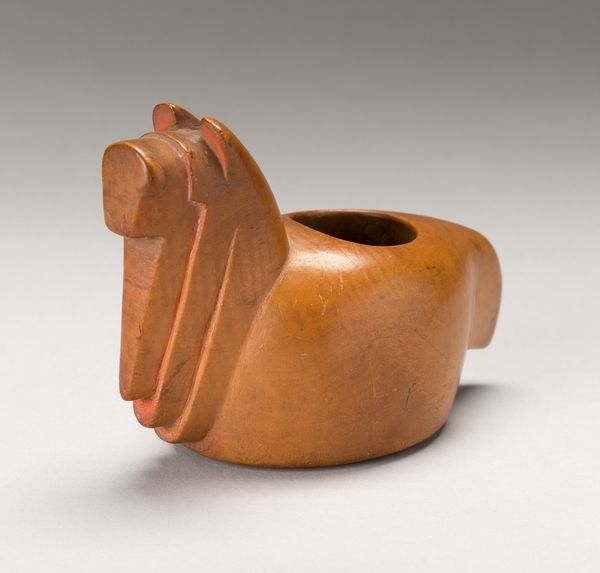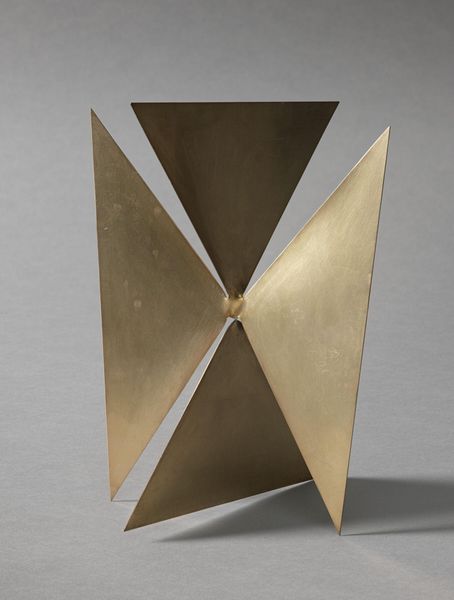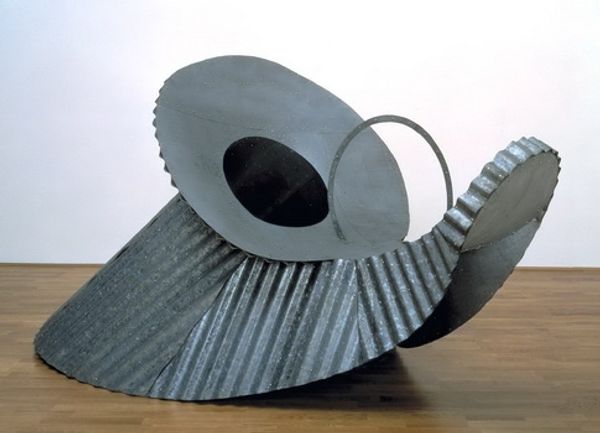
ceramic, bronze, sculpture
#
abstract-expressionism
#
minimalism
#
sculpture
#
ceramic
#
bronze
#
form
#
geometric
#
sculpture
#
ceramic
Copyright: Ruth Vollmer,Fair Use
Curator: Immediately I’m struck by the stillness, the kind of muted, weighty presence these bronze sculptures emanate. They almost feel archaeological, remnants of some advanced, forgotten civilization. Editor: They do have that monumental, albeit miniature, quality. What draws me is their quiet defiance of patriarchal art history— a woman working in geometry and bronze in the 60s, demanding to be seen and taken seriously within typically male-dominated artistic terrains. Curator: Absolutely. We're looking at Ruth Vollmer's “Trenchant Sphere,” created in 1967. Vollmer, who navigated both Abstract Expressionism and Minimalism, presents us with two distinct ceramic or bronze forms: a cylindrical piece etched with vertical striations, placed next to a bisected sphere on a small stand. Editor: It's interesting how Vollmer plays with wholeness and division. The sphere, sliced open, exposes an interior landscape, challenging our perceptions of the solid form. Is it complete, incomplete, or suggesting something more? It feels inherently political—a kind of violent disruption inflicted upon the supposedly 'perfect' form, like examining our own society and systems. Curator: I read the sphere differently. The bisected form, the exposing of interiority, echoes alchemical traditions where inner transmutation reveals wholeness. And Vollmer did delve deeply into organic forms and mathematics, mirroring natural systems with precise geometric vocabulary. It resonates deeply with ancient ideas about macrocosm and microcosm, finding correspondence and continuities. Editor: I see that too. Although perhaps there's an interplay. Her work becomes more impactful, not less, when considering how she deliberately, carefully, dissects a shape to question form itself. How can a whole express deeper tensions if we do not allow space for fractures or incompleteness? The tension in it makes it even more alive! Curator: Indeed, there is no simple reduction. Ultimately Vollmer invites us to look beyond binaries – organic and geometric, solid and void – suggesting harmony arises in relationality and liminality. Editor: Her practice reflects what it meant to subvert a pre-existing world view in sculpture, and demand space as a woman. Vollmer offers insight for reconsidering how power and form continue to be gendered within the modern-day. Curator: Absolutely, leaving a powerful impression both formally and symbolically.
Comments
No comments
Be the first to comment and join the conversation on the ultimate creative platform.
